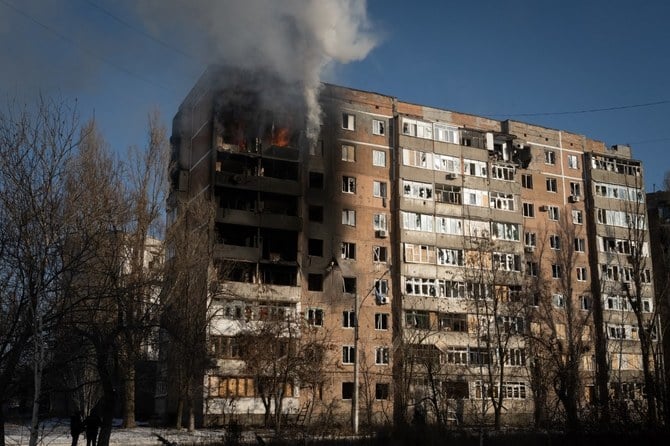Mohamed Chebaro
Nearly a year has lapsed since Russia launched its special operation to change the regime in Ukraine and prevent the country from allegedly seeking further ties with the EU and NATO. However, the invasion of Ukraine has been met by a series of unexpected obstacles that have exposed Russia’s limited power and highlighted once again how a small force with the right tactical weapons, intelligence and a determined human asset can blunt the efforts of one of the largest armies in the world.
As political and diplomatic efforts continue to be elusive, the Russian preparations for a late winter offensive that would metamorphose into an all-out spring push to punch through Ukrainian defenses are likely to yield only limited results, according to most military experts, further highlighting the conundrum the world finds itself in. Moscow looks unable to achieve its maximalist aim of annexing Ukraine or influencing a regime change at its doorstep in the face of alleged eastward NATO expansion. The Ukrainians, despite the substantial support they have received, will not be able to liberate all the territories occupied since Feb. 24, 2022, or those seized in 2014.
All evidence, therefore, continues to point to the fact that attrition is likely to remain the name of the game in Ukraine for the foreseeable future, with no one likely to emerge victorious in 2023 – short of course of an accident or a miracle that could spur all parties back to the negotiation table. Losses in military terms have been colossal for the Russians, as well as for the Ukrainians, who have also suffered substantial civilian losses and infrastructure damage, which, given Kyiv’s defensive posture, is likely to continue as the conflict risks becoming frozen.
A year on, it is obvious that Russia has lost out and, in comparison, Ukraine has survived, with its military successes emboldening its leadership. The West has also outperformed all expectations and remained united in the pursuit of its goal of supporting Ukraine with enough “defensive” weapons to frustrate Moscow’s advances. At the same time, the West is denying the Ukrainians the assault capabilities to turn the table on the Russians in the hope of keeping a ramp open for the Kremlin to walk down in the future. Meanwhile, global players like China and India have reaped some short-term benefits through their access to cheaper Russian energy, but they have stayed on the fence, refraining from actively pushing for peace, even though a protracted war would likely negatively impact their economic growth. Russia’s invasion has descended into a zero-sum game and a guessing game to counter the fluid strategy of the opponent. It is clear that the West has crossed a new threshold in its assessment of the war, scaling up its weapons deliveries to Kyiv in terms of numbers and strategic quality, which modern theaters of war have not seen used before. This demonstrates the stakes at play in the game of denying Russia a victory that could further encroach on democracy, liberty and Western freedoms and way of life.
Russia’s illegal annexation of four partially occupied regions of Ukraine last October, along with the constant posturing and nuclear threats, have served to persuade hesitant nations in the West, such as Germany, to open their storage facilities and deliver advanced battle tanks, air defense shields and other hardware to Ukraine. This disproves the Kremlin’s long-held view that EU countries would not stay the course and that their support to Ukraine would falter in the face of energy security disruptions, the increased cost of living and economic volatility. All the indications coming from the Kremlin point to the intention of achieving all prewar goals, unless something drastic happens. The Ukrainian leadership, meanwhile, is intent on winning back at least what it has lost since February 2022 as the only way to prevent any future Russian adventures.
Another aspect of this war is that it has constantly tested the world order that was fought for and conceived during and after the Second World War. Its conclusion cannot be allowed to see the demise of that order at this junction of history, when humanity is facing threats of a chaotic transition induced by the new digital age, overseen by a short-termist global leadership that is still grappling with climate change, shrinking resources and wider gaps between the haves and have-nots. All of this comes at a time of unparalleled geopolitical divisions and a world that is, more than ever, lacking in trust and solidarity to uphold the common good.







